ARCHBISHOP MURPHY HYBRID ROLLOUT STILL THRIVING

Everett Herald
The spacious campus for the small community at Archbishop Murphy High School has shown advantages in a pandemic, making it easier to keep people apart physically and together emotionally.
“So far it’s going really well,” said AMHS Principal Alicia Mitchell on Jan. 26.
The private, tuition-based Catholic high school is open to the religious and non-religious and has 468 students on a 22-acre site. The standard teacher-to-student ratio is 11 to 1.
“We have space still to accommodate up to 50% of our students in the cohort groups,” Mitchell said.
She said the social and emotional challenges of remote learning have been met with a mix of specific professional development, as well as protocols to assure students are connecting with each other and teachers.
Students are required to have their cameras on for remote learning experiences. The school was 100% remote with public schools at first, but eased into a hybrid program this school year, starting in August with a small group and kicking off a larger endeavor Jan. 4.
“We have a small student body and a very large, spacious campus, so that’s really what allowed us to be able to have the capacity we have,” Mitchell said.
She said two-thirds of the student body is still remote, and AMHS is providing the same classes on a remote basis, so the classroom experience is shared and is of the same level of quality.
Protocols for the test of bringing people back to campus have worked well for the prevention of COVID spread, so they have not changed much, she said.
As of Jan. 26, AMHS had only experienced one COVID-19 exposure from an offsite contractor that occurred in summer. Both exposed staff members were masked.
“They were both able to isolate for the quarantine period, and neither one of them, thank goodness, contracted COVID,” Mitchell said.
The success so far has led to a continuation of existing protocols both onsite and in communication with outside agencies.
“We just continue to attend our weekly meetings with Snohomish County Health Department and follow their guidance,” she said.
The only change with the new variant of COVID-19 is that some staff members have increased personal protective equipment to “maybe two face masks, or a face shield in addition to their face mask, just become more personally comfortable with that due to the (B.1.1.7.) variant.
“We haven’t changed anything to our protocols yet, but we continue to follow all of the guidelines closely. So, should something change in the guidance, we would try to figure out a way to make that work here, too.”
Protocols that have sustained since the beginning of the school’s hybrid program restart are centered on social distance and cleanliness. They include one-way paths to get to and from classes, a staff presence around campus to remind students about social distance, and a masking requirement for everyone. Screening questions and temperature checks are standard for all who arrive, including students, staff members and visitors.
Hand washing or sanitizer are encouraged, cleaning is increased and includes a new tool: an ultraviolet light device that can clean the air if there is any concern about exposure. Mitchell said it can be used before someone enters a room, if added protection is needed for the staff member who is cleaning.
“The chamber can circulate and clean the air” in offices, in the event of an exposure, she said. It can be used on specific items too, such as electronic devices.
Distance is spelled out in the cafeteria, where students remove their masks to eat and drink and sit 6 feet apart. Outdoor canvas tents were purchased for students who want to apply more caution and eat outside. And some families have opted to remain in fully remote learning.
The academic element has not taken a hit at AMHS, Mitchell said.
“What we’ve been looking at is student progress as far as how they’re doing in terms of their grades,” Mitchell said.
AMHS has maintained a traditional letter-grading scale, and classes meet daily “for live synchronous instruction,” she said. The structure has been beneficial, she said, and progress is still measured by testing and other means.
“Students take tests, and they turn in assignments and write essays and do all of those same types of things that they would do if we were fully in person, and our students are performing at similar levels academically when you look at grades and overall performance as they have in previous years when we’ve looked at similar checkpoints throughout the semester,” Mitchell said.
She said attendance is fairly consistent with previous years as well.
“They are showing up, and they’re academically doing well,” she said.
For the full hybrid launch in early January, students were split into two cohort groups with half the campus attending part of the week. The groups rotate according to last names starting with A-K and a second group is the last names starting with L-Z.
But Mitchell said AMHS offered an option for students to choose a cohort, if it matched them with friends.
The smaller student body creates a tight-knit community, so the added option allows students to maintain close bonds, she said.
“We’re social creatures, and that’s been such a difficult part of the pandemic,” Mitchell said.
